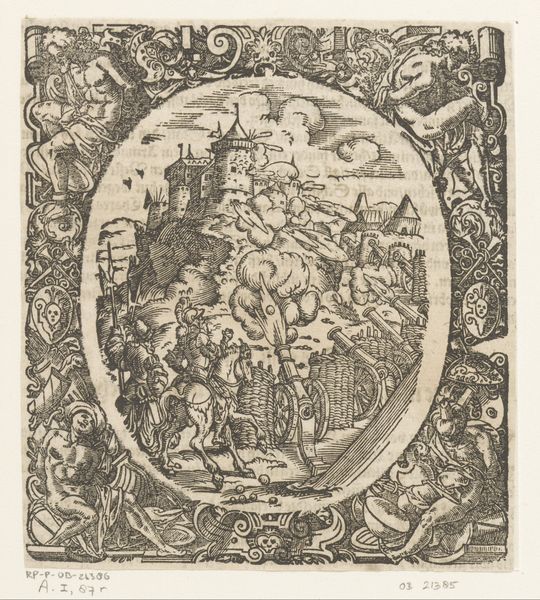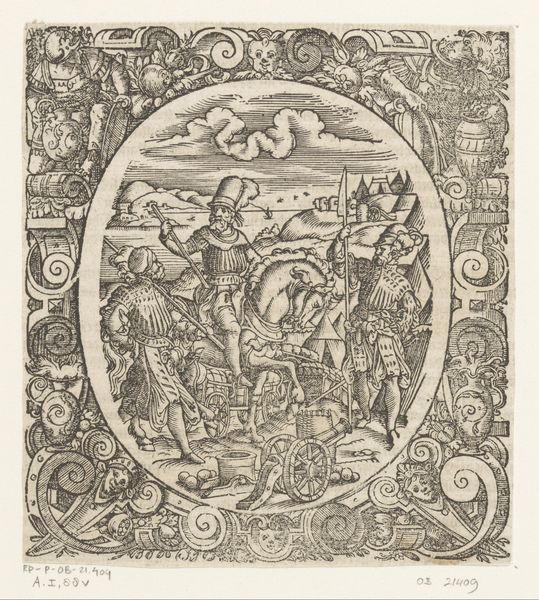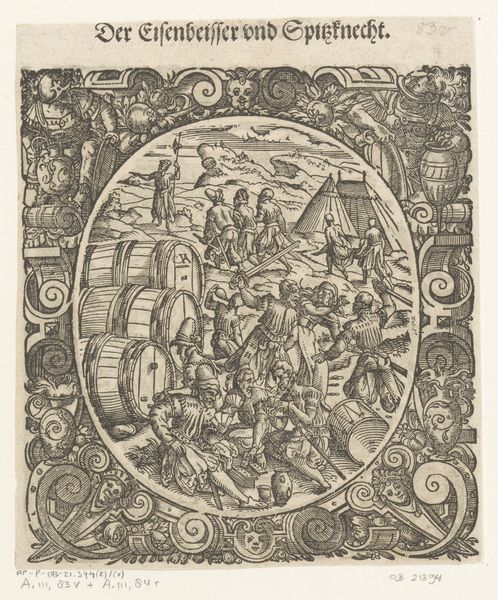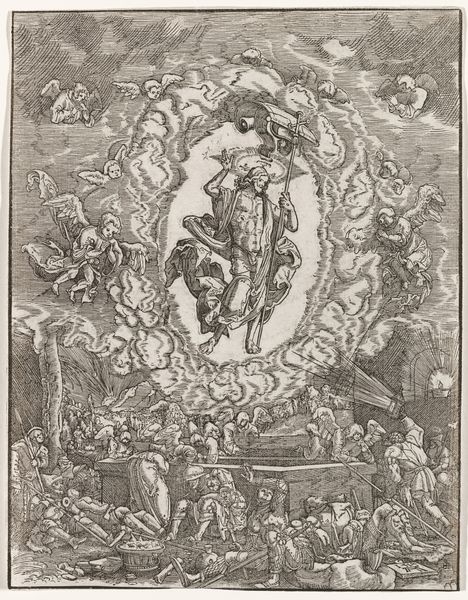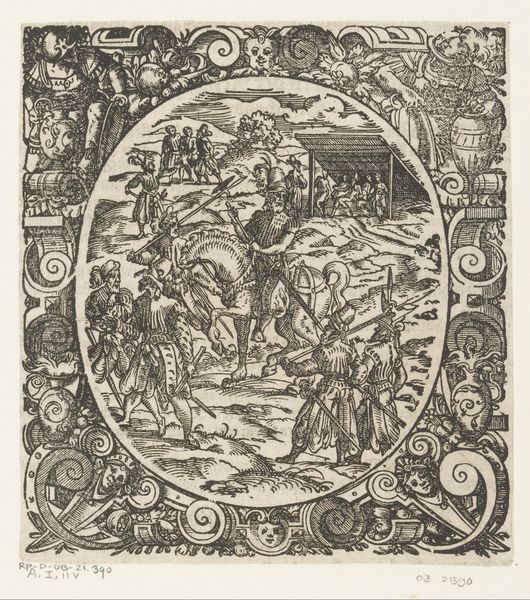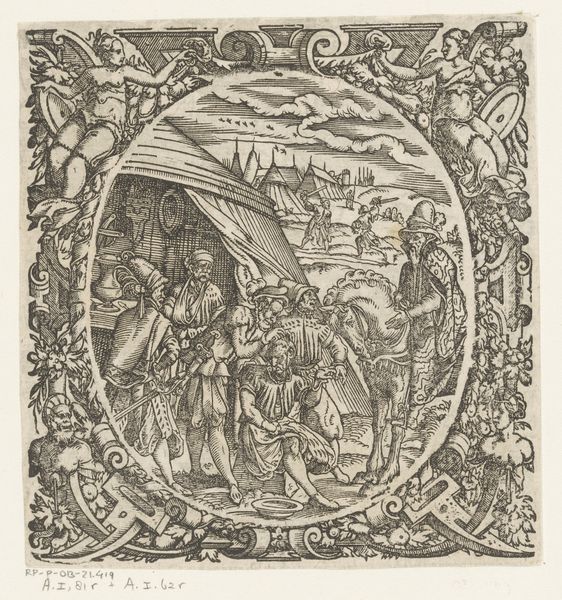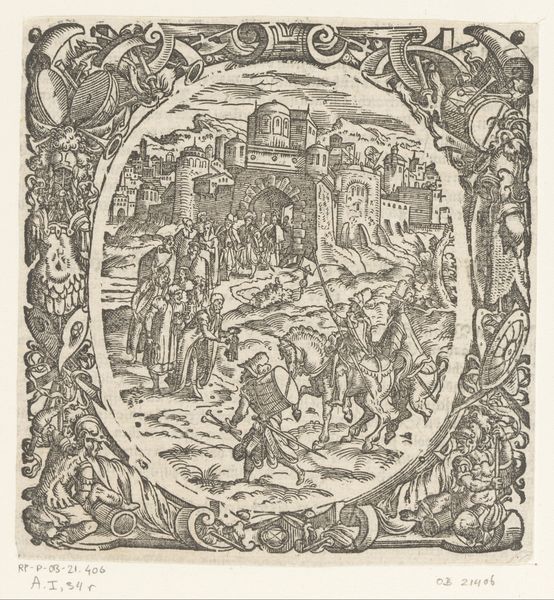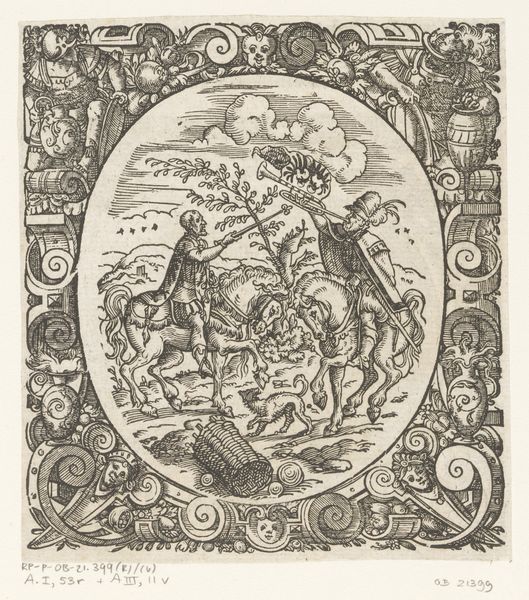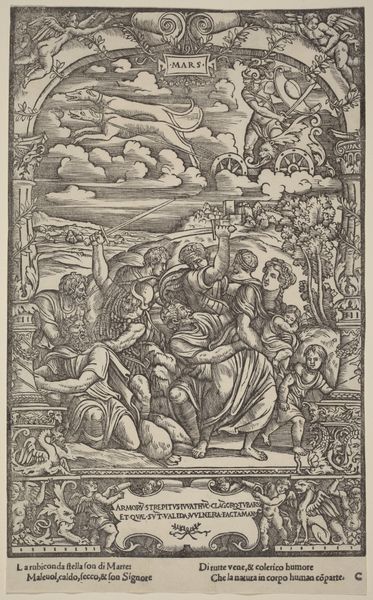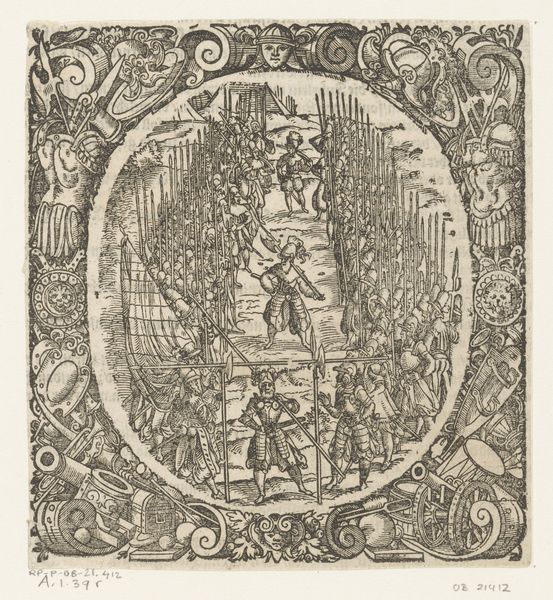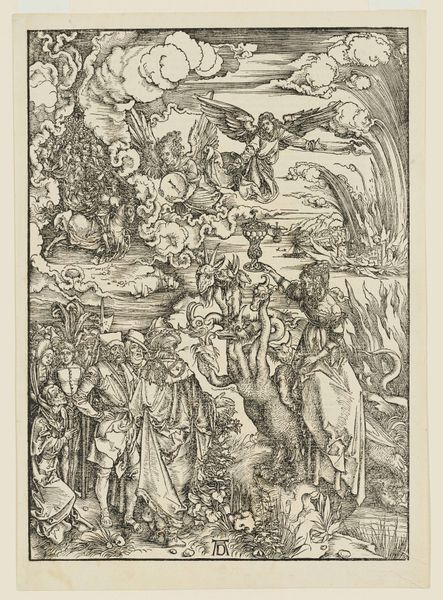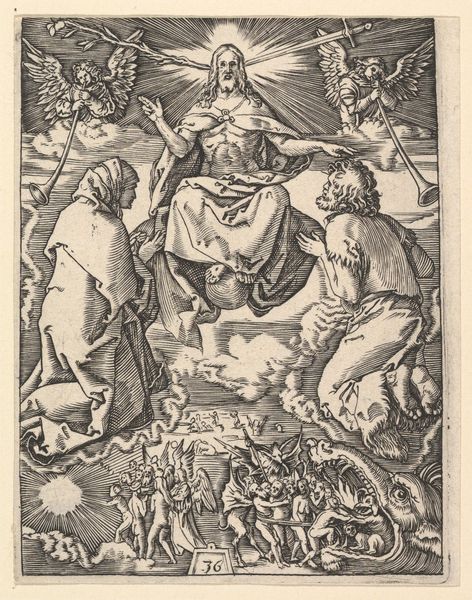
Dimensions: height 144 mm, width 129 mm, height 113 mm, width 88 mm
Copyright: Rijks Museum: Open Domain
Curator: Look at this remarkable print from 1573 by Jost Amman, titled "Hoofdman". It’s housed here at the Rijksmuseum. The scene depicts a stern looking leader, surrounded by his retinue. What strikes you first about this artwork? Editor: The density of detail is incredible, even claustrophobic! It’s like peering into a packed diorama; the frame itself seems to be straining under the weight of the imagery. Curator: Precisely. This dense style reflects the artistic conventions of the time. But let’s unpack this from a power dynamic perspective. The “Hoofdman,” presumably a military leader, stands central, larger than everyone else and is given considerable prominence and authority within his immediate social sphere. Editor: Absolutely, and notice the varied weapons each attendant carries – a fascinating visual study of violence, I suppose. Are we meant to understand his power is solely determined through strength? Is that the lens through which his society defined and validated that power? Curator: Good question! In terms of political imagery, these figures, through association and support of this Hoofdman are perhaps complicit in a narrative of early societal hierarchies, perhaps speaking of issues we still experience today? Think, the power structures we've inherited, sustained through institutions and ideologies? Editor: And it extends beyond immediate visuals, right? A society's political and social landscape shaped both the creation and the reception of these images. How did those viewing the image during Amman's time react versus the responses in subsequent centuries? Curator: The engraving as print allowed the image and therefore political commentary to circulate far and wide – a democratization of art which also democratized access to potentially destabilizing ideas! In contrast, today's audiences might read into the depicted scenario considerations about toxic masculinity and military imperialism. Editor: That brings another dimension in the cultural significance behind his clothes and stance - are they symbolic, representing a broader historical narrative beyond the surface-level presentation? Does it challenge conventional portrayals or does it simply conform? Curator: We might say that the very medium—print—made art accessible outside of the wealthy and noble classes, shaping public opinion about authority and social roles, offering, at the time a new form of commentary to an emerging reading class. Editor: Seeing this intricate engraving invites so many relevant lines of thought that question how such artworks help us examine inherited social narratives in innovative ways. Curator: Agreed. It reminds me of the profound effect even seemingly static historical artworks can have, providing fertile ground for discourse surrounding issues of power dynamics through history.
Comments
No comments
Be the first to comment and join the conversation on the ultimate creative platform.

